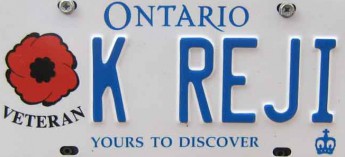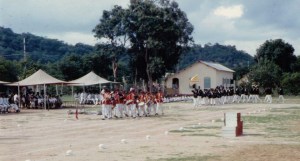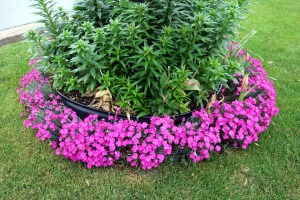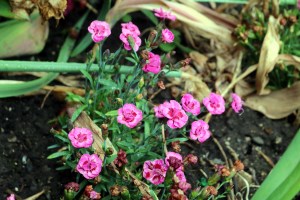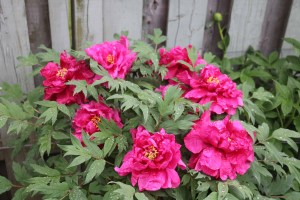
A recall by Veteran Commander Nanda Kumar Parrat (Roll No 322)
I joined SSA in January 1965 in grade 5, age 9. The School Band members, especially in their ceremonial dress of Blood Red and Steel Grey (School Colours) with White anklets and gloves were a sight to behold for a nine year old.

Mr Guddu Shaib, a Veteran Pipe Major from the Madras Regiment, joined our school in 1966 and introduced bagpipes for the very first time.
As it happened, from 1965 – 1970, a Senior of mine was the SOLE player of this very light innocuous looking Triangle.
Everyone who was in school during those six to seven years, remember only THAT cadet as playing the Triangle….and NO ONE ELSE.
About 40 years later I met the Triangle player, now an Indian Navy Veteran, and suddenly I realised that it was a real feat and mystery that no other cadet ever got to play the Triangle while he was in school (all of 7 years.) As it was the lightest and easiest instrument in the band to play and to merit the extra ration of milk, etc., there were hordes of others trying for that particular instrument, but never made it.
The reason suddenly flashed to me after 40 years…the Triangle player was the only one to fit into the ceremonial dress which was specially stitched for him in Grade 5 (1964). No other cadet could fit into that small size uniform. That’s how he managed to stave off any attempts of others to play the Triangle for seven long years. Some people are lucky early in life.
Reveille with Bugle
Cadets playing bugle were detailed to sound morning Reveille at our school. It went like this, ‘Taa da Taa da Tat Tat Tat Taa’. We had this song in the same tune, ‘Chaar-lie, Chaar-lie, get up for tea’. At least we then believed….the song line…One Senior used to climb the roof of the dormitory at 0530 hrs to ostensibly increase the range of the sound of the bugle.
Retreat…. Sounds of Last Post
During the Annual School Day, sounding the Retreat, was a sombre occasion and the last act after Prize distribution, VIP speech, etc. Whereas, the Last Post sounded sentimental in itself, the apparent ‘Echo’ played by our cadet buglers from below the distant hill (firing range) made one’s hair stand on end.It is already dusk ..sun already behind the hills…the Last Post…wow.. Totally memorable even after 50 years…… The ECHO …still echoes in my heart.
This image came from the archives of Abe Jacob Abraham (Roll No 114,) as a Cadet at Sainik School Amaravathi Nagar in 1964, sounding the Reveille with Veteran Colonel Ravi Nair (Roll No 131) on his right.
Colonel Nair recalls: “Most memorable phase of life. Waking up the School for the day. An onerous task indeed, which Abe and I did dutifully for the entire tenure in school. After the Reveille, rush to the Mess to have a glass of glucose concentrate and two eggs as compensation to lung power!!“
Dr KT John (Roll No 84) writes from Melbourne, Australia: “I have played the bugle with you and Abe, Ravi, both for waking people and also for the lowering of the flag at dusk.
Remember playing the Reveille with Jaideep GC (Roll No 55) echoing, which used to wake up most of Amaravathi Nagar, including the donkeys, who occasionally joined in the chorus. Oh! what wonderful times.”
Veteran Colonel Jayath Pooviah recalls: “Later it devolved upon me to carry out this task…. Only I stumbled up that hill in my pajamas and woke up with the school while blowing that bugle... Never got that drink after!!“

Joining the BAND Wagon by Veteran Colonel T Ravi (Roll No 556)
In 1967, Pallava and Valluvar Houses were housed in the two storey buildings. Raghavan was the school vice captain. He lived in one of the side rooms along with our House Captain Muthukumar. Every morning Raghavan emerged from his room to blow the Reveille which echoed throughout the Amaravathi Valley.
Each week, Mr Guddu Sahib detailed a buglar to blow the Reveille in the morning and one for the Retreat in the evening. The retreat time was normally 15 minutes before the school ‘fall-in’ for Prep. Most of us running to be in time for the Prep cursed the Retreat. You had to freeze in whatever pose you heard it. The trail that ran behind the MI Room was full of human statues when the buglar blew the Retreat and the flag came down.
There were lots of misconceptions. ‘Blowing a bugle while sitting down, made your balls big,’ was one of them. Not everyone could blow the bugle, even though quite few could blow their own trumpets. Bugle was easy to carry, as compared other equipment, except the Triangle and Cymbals.
The dreaded instrument was the Base Drum, which needed strong shoulders and height. VP Misra (Roll No 179) and R Gnana Prakasam (Roll No 630) were made for Base Drum. Normally, the band used two side drums. The unwieldy kettle drums came out only on occasions. I still can’t recollect how Mr Guddu Sahib mustered those many side drummers.
Mr Guddu sahib’s favorite instrument was the bagpipe. We learnt to play the pipe in stages. Initially, just the chanter. Then we graduated to playing the pipe with the drones blocked. Finally, the pipe with all three drones. Each of the guys in the band, had their own favorite tunes. Mr Guddu Sahib cajoled and convinced the members to play the number he chose.
Sometime in 1969 or 1970, the band was present for an event in Udumalpet (Free Eye Camp.) State Ministers Sadiq Basha and Mathialagan were the guests of honour. When the event finished, the two misters came to the band stand and congratulated Mr Guddu Sahib, who reminisced about the accolades as long as we were at school.
Veteran Captain R Gnana Prakasam writes:
Wow …what nostalgic memories ..I have to confess that I never had any music sense and my motivation to join Band was only Extra Diet..Band Milk. My enormous appetite could be satiated by Band Milk and extras. I played cymbals and base drum. We really had lots of privileges like skipping PT and going out of school for some performances. Best sportsmen from our batch were in School Band. Rajarajan was the favourite of Gudddu Sahib as he was versatile in many instruments. He was our No 1 Bagpiper.

